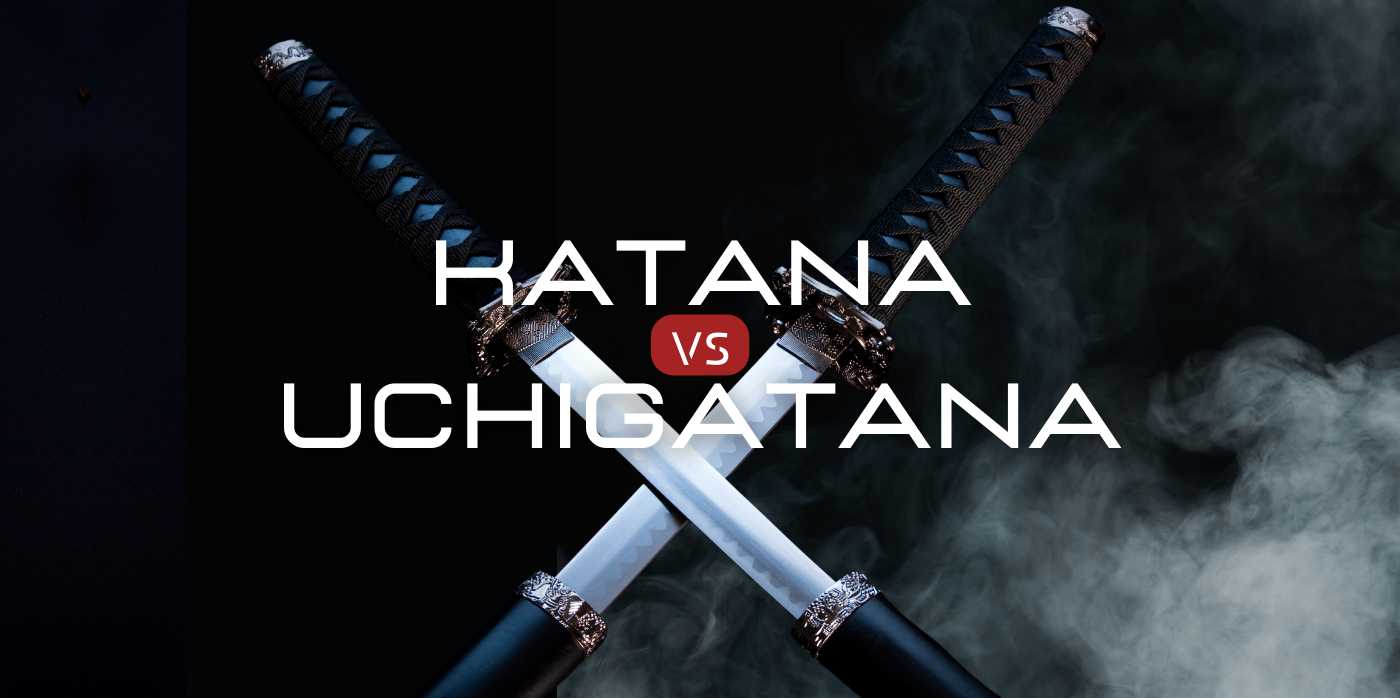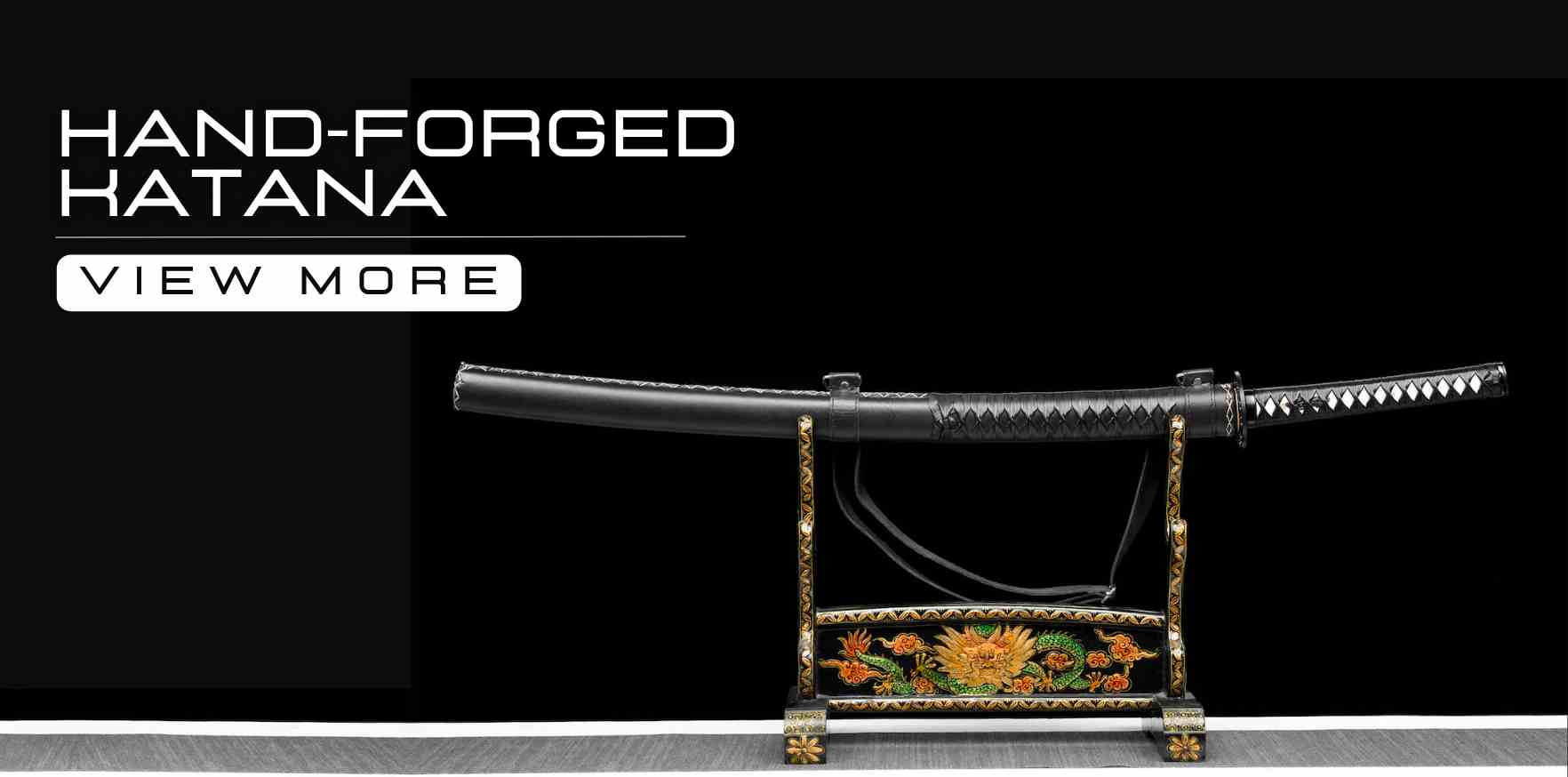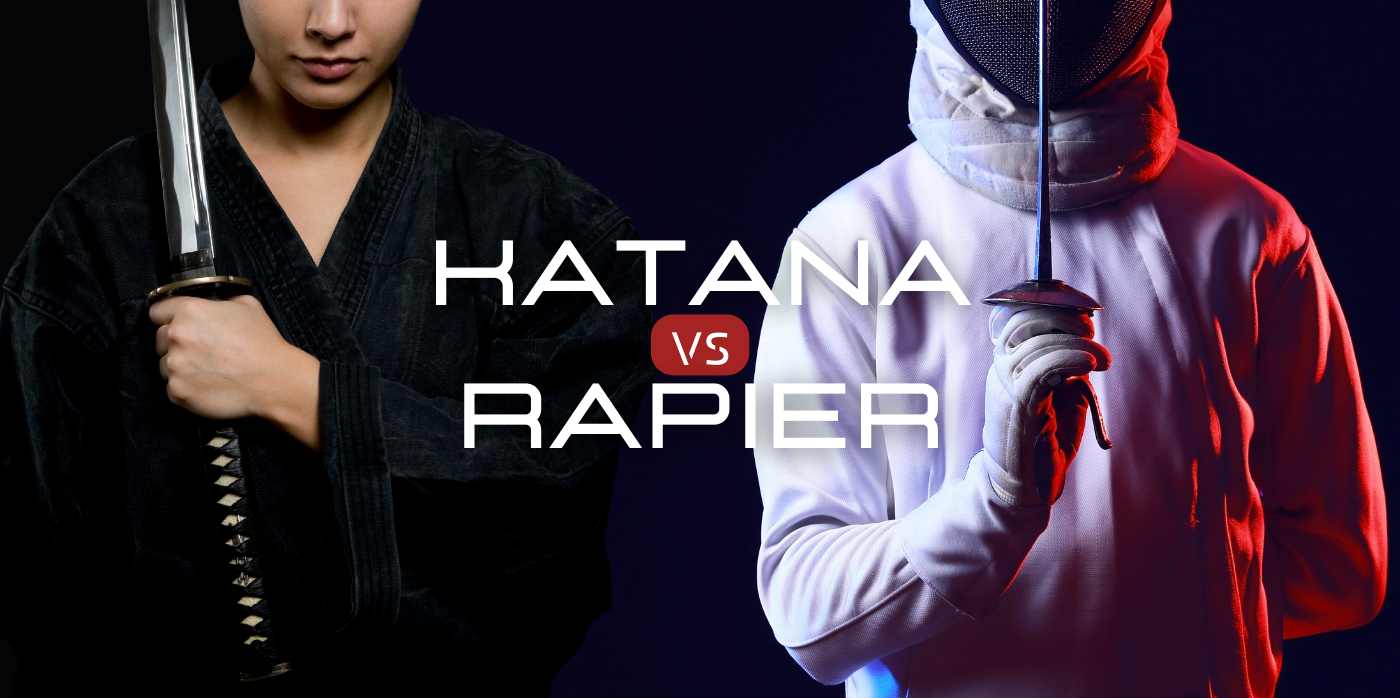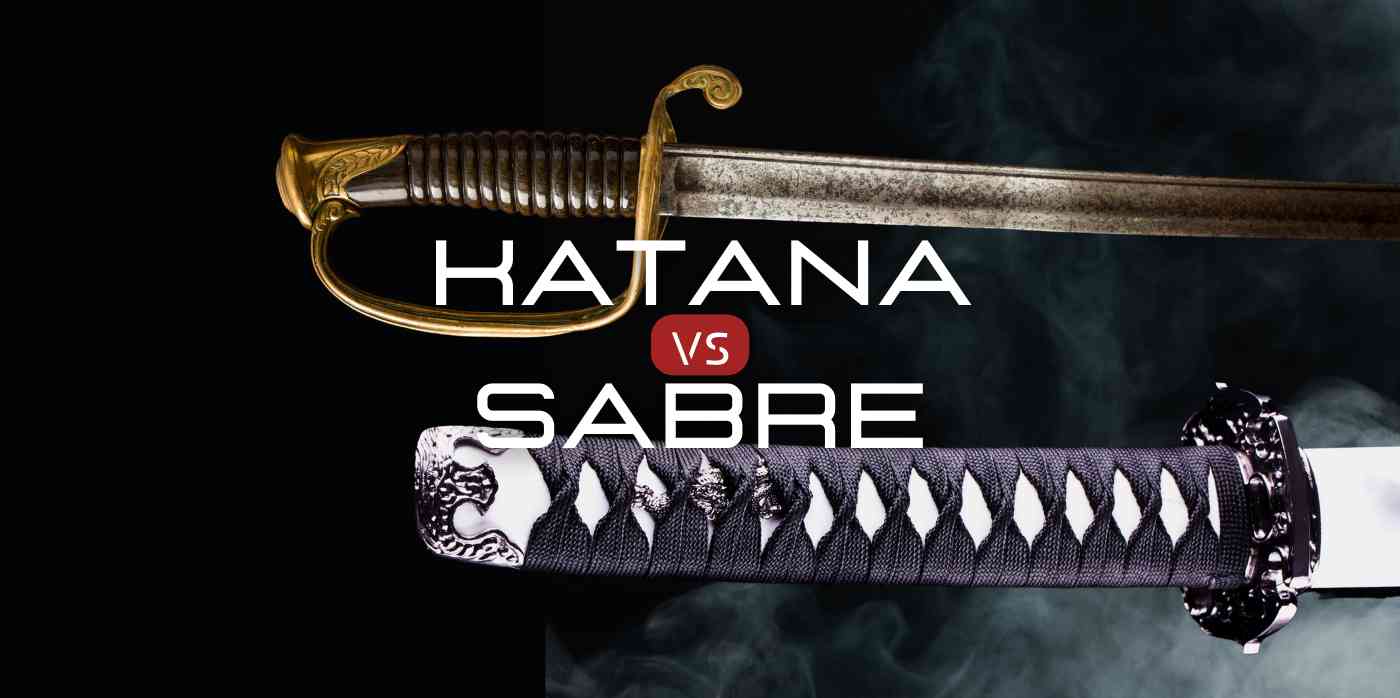Immerse yourself in the world of the samurai, and you'll discover the Uchigatana and the Katana, two extraordinary swords that symbolize the peak of Japanese artistry, cultural significance, and martial skill. Each blade carries its own narrative, encapsulating the historical backdrop, fighting methods, and aesthetic values of the eras they originated from. This article explores these two famous Japanese swords, their distinctions, similarities, and the role they've played in shaping martial arts and samurai culture.
1. Understanding the Katana and the Uchigatana
The Katana, a potent emblem of the samurai's honor and discipline, is celebrated for its incomparable sharpness, unique curvature, and unrivaled durability. Conversely, the Uchigatana (打刀), which paved the way for the Katana's development, distinguished itself on the battlefield with its lightweight design, agility, and keen edge. Indeed, the uchigatana is considered to be the ancestor of the katana. It is far less robust, and its blade of lesser quality. It was a very basic, light weapon held by the infantry.
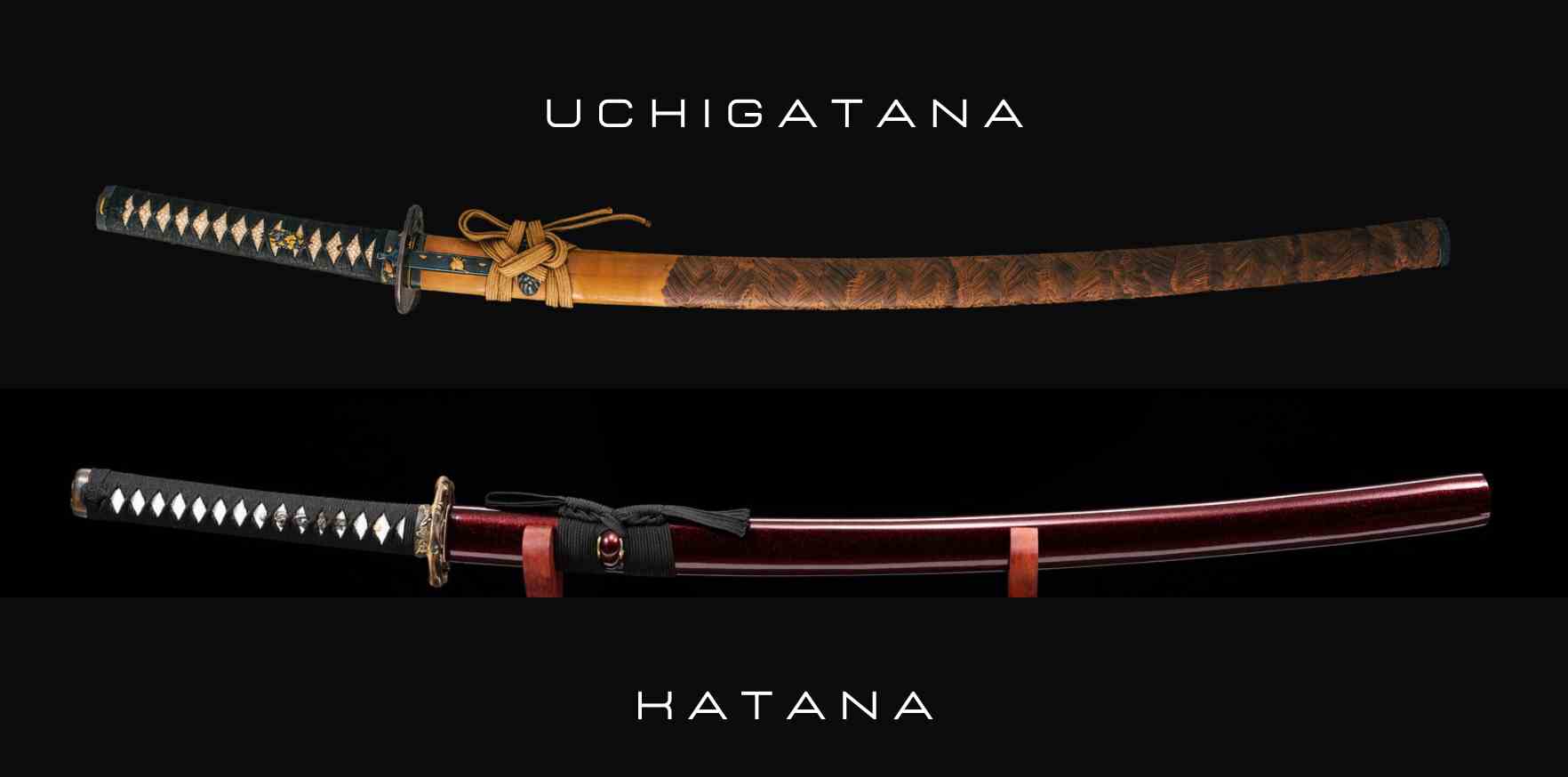
2. Katana Craftsmanship vs Uchigatana
Katanas, crafted using the intricate process of differential hardening or 'hamon', result in a blade that boasts a hard edge and softer spine, a combination offering both cutting power and flexibility. The Uchigatana, although simpler in its construction process, was expertly forged to ensure the sword was robust, sharp, and easy to wield.
3. Katana Parts vs Uchigatana
The Katana and Uchigatana share some similarities in their design and components, including the blade, guard, handle, and pommel. However, the subtle differences in these parts have a significant impact on the functionality and usage of these swords.
3.1 Blade
The Katana's blade is renowned for its distinctive curved shape, which allows for more effective cutting and slashing. Conversely, the Uchigatana traditionally had a more straightforward design, often without the pronounced curvature found in later swords like the Katana.
3.2 Guard
The tsuba, or guard, of a Katana is often artistically decorated, serving as a platform for artisans to showcase their skills. The Uchigatana, given its older design, usually has simpler, less ornate guards that primarily serve a functional purpose.
3.3 Handle
The Katana's handle, or tsuka, is long enough to accommodate two hands, providing the wielder better control over the blade. In contrast, the Uchigatana usually has a shorter handle, often crafted for one-handed use which allowed for a different set of combat techniques.
4. Katana Characteristics vs Uchigatana
Understanding the individual characteristics of the Katana and Uchigatana—such as blade design, weight, sharpness, grip, balance, durability, and reach—provides a comprehensive insight into their functionality, practicality, and usage on the battlefield and in martial arts.
4.1 Blade design
The Katana's blade design is one of its defining features, with a distinct curve that facilitates swift and powerful cutting movements. The Uchigatana's blade, on the other hand, is usually straighter, making it more effective for thrusting attacks.
4.2 Weight of the blade
The Katana, generally speaking, is heavier than the Uchigatana. This added weight, combined with its curved blade, provides the wielder with a powerful cutting force. The Uchigatana, in comparison, is lighter and thus, can be maneuvered with more speed and agility.
4.3 Sharpness
Both swords are renowned for their sharpness, although the techniques used in their respective constructions might differ. The Katana is especially known for its "hamon," or temper line, that is a result of differential hardening and showcases the blade's edge sharpness. The Uchigatana, while also sharp, doesn't typically feature such a pronounced temper line.
4.4 Balance
Balance is a crucial aspect of any sword. The Katana's balance point is usually closer to the hilt, providing better control and facilitating quicker, more powerful cuts. The Uchigatana, due to its lighter design, also has a balance point near the hilt, enabling rapid movements and thrusts.
4.6 Durability
Katanas are incredibly durable, thanks to the unique Japanese sword-making process that involves folding the steel numerous times. The Uchigatana, while also sturdy, doesn't typically undergo this rigorous folding process, making it slightly less durable than the Katana.
4.7 Reach
The Katana, with its longer blade and hilt, offers greater reach than the Uchigatana. This extended reach was a strategic advantage on the battlefield, allowing Samurai to strike their opponents from a safer distance.
Summary:
- The unique curvature of the Katana's blade sets it apart, while the straighter edge of the Uchigatana better accommodates thrusting techniques.
- The Uchigatana is less heavy than a katana
- Each of these swords is reputed for its exceptional sharpness. The Uchigatana is also sharp but doesn't typically feature a pronounced temper line.
- Katanas are incredibly durable due to the unique Japanese sword-making process, which includes folding the steel numerous times. The Uchigatana, while also sturdy, doesn't typically undergo this rigorous folding process, making it slightly less durable than the Katana.
- With its longer blade and hilt, the Katana offers greater reach than the Uchigatana.
5. Katana Combat Style vs Uchigatana
The fighting techniques linked to the Katana and Uchigatana are intimately connected to each sword's distinctive design and historical application.
The martial applications of the Katana are visible in various Japanese martial arts, including Kenjutsu, Iaido, and Kendo. Emphasis is placed on powerful, slashing strikes and various cutting techniques, leveraging the sword's curved blade and longer reach. The two-handed grip of the Katana enables better control over these movements.
The Uchigatana, conversely, was often used with one hand and was better suited to swift stabbing motions. This allowed for quicker, more fluid movements in combat, allowing the wielder to strike and retreat rapidly.
6. Katana Maintenance vs Uchigatana
Both the Katana and Uchigatana require regular maintenance to retain their sharpness and prevent any damage or rust. However, the processes differ slightly.
Katana maintenance, or 'Tōken Jōhō,' is a detailed and meticulous process, involving careful cleaning, oiling, and inspection of the blade for any signs of rust or damage. It also includes preserving the 'hamon' or temper line.
The Uchigatana, while also requiring cleaning and oiling, doesn't necessitate preserving a 'hamon,' simplifying its maintenance process.
7. History and Origin of the Katana vs Uchigatana
Hailing from the Heian period (794 to1185), the Uchigatana reigned as the weapon of choice during this time. This sword, with its straighter single-edged blade, was predominantly utilized in one-handed combat techniques for thrusting attacks.
The Katana originated during Japan's Kamakura period (1185-1333) when the demand for a more efficient weapon against the Mongol invaders led to the development of a curved blade, which could be drawn quickly for combat.
The transition from Uchigatana to Katana marked a significant evolution in Japanese swordsmanship. It was an adaptation to the changing demands of warfare and the ongoing pursuit of more effective weapons.
As war tactics and armor evolved, the need for a more effective cutting weapon led to the development of the Katana's curved blade. The Uchigatana, although it remained in use for some time, eventually gave way to the superior cutting power and versatility of the Katana.
Conclusion
Grasping the parallels and contrasts between the Katana and Uchigatana provides us with a window into Japan's illustrious heritage of martial arts and swordsmanship. It further highlights the persistent adaptation of these armaments in response to evolving combat strategies and advancements in technology. Regardless of their differences, both swords reflect the mastery of ancient Japanese sword making and remain symbols of Japan's samurai culture.



